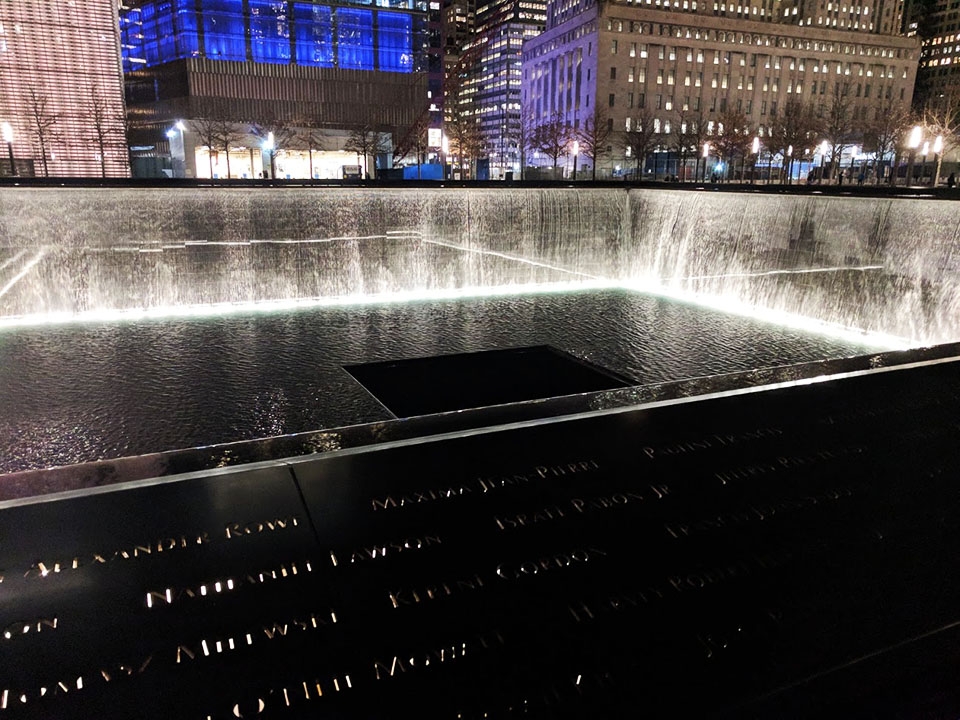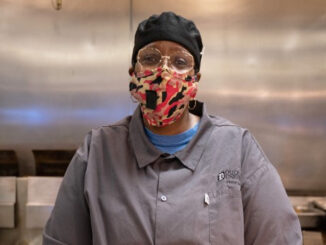
Raymond Arke | News Editor
03/22/2018
March 20 marked the 15th anniversary of the Iraq War. American troops still patrol Baghdad streets long after the capture and overthrow of Saddam Hussein. While not directly related, the war in Iraq will forever be framed by the events of 9/11. Now, years later, one New York journalist recalled covering the terror attacks and his experiences witnessing one of the young millennium’s biggest and most horrific events.
Clemente Lisi can still remember practically every detail of the day, down to the weather. At the College Media Association annual conference in New York City, Lisi, a former journalist for the New York Post, shared with me and a small group of fellow student journalists his experiences covering the Sept. 11, 2001 terrorist attacks.
What Lisi calls a “generation-defining event” started out as any other day for him. He was 26 and had been working his self-described “dream job” as a reporter for the New York Post for about three years.
“From fires to murders, I had covered nearly every corner of the city,” he said. “It was hard work, but I loved it.”
Sept.11 was set to be a pretty uneventful news day, the biggest story being primary day for the mayor’s race. He had called the Post’s office looking for an assignment and was told to come into their Times Square office. He got in the subway to head to the office at exactly 8 a.m.
“The world changed in the hour-long train ride from my home on Manhattan’s Upper East Side to the office,” Lisi recalled.
He remembered getting into the office shortly after the first plane had hit the North Tower of the World Trade Center at 8:46 a.m. Reporters and editors in the newsroom were gathered around the TV, confused.
“I had been underground for nearly an hour. I had no idea what was taking place. It turns out neither did anyone else,” Lisi said.
He remembered that most of the Post’s staff had thought it must have been a small plane that had crashed by accident. To find out what was happening, Lisi said “my instincts as a reporter kicked in,” and he got on another subway to get to the World Trade Center.
“I had covered many accidents in the past. My goal was to get to the scene, interview witnesses and officials gathered there,” he said. “It was, in my mind, just another story, just another day.”
Once again going underground meant that Lisi was cut off from the events happening above on the streets. He was unaware and moving along New York’s vast subway system when at 9:03 a.m. a second hijacked airliner was driven into the South Tower. As the attacks reverberated throughout the country, Lisi remembers his train moving slowly as a chain-reaction of delays and cancellations hit. He exited the subway several blocks early at Washington Square Park, emerging to “chaos that had overtaken the streets.”
“A giant cloud of smoke could be seen on the horizon. I was still nearly two miles away. People were standing around confused,” Lisi remembered.
He talked about how people were gathering around stopped cars, listening to the radio. He tried using his new cell phone, bought the day before, but all the lines were jammed. Lisi was still in the dark and determined to get downtown.
“I was on my own, laser-focused on getting downtown to cover, unbeknownst to me at the time, the biggest story of my life,” he said.
As Lisi worked his way through the city streets, he remembered being too far away to realize the South Tower collapsed at 9:59 a.m.
“All I could see was giant clouds of smoke covering the sky,” he said. “From my viewpoint, both towers were still standing, and only one plane had hit one of the buildings.”
Lisi was 10 blocks away from the towers when he looked up and saw something he could never forget. He watched as the North Tower crumbled.
“The sight of the building falling on itself amid a backdrop of people on the street screaming and wailing is the one thing I remember most from that awful day,” he recalled, choking up. “I will never forget the loud, crunching sound those steel beams made as the building came crashing down.”
He described the sadness he felt in his heart not only as a New Yorker, but as an American. Still, he pressed on as a journalist trying to get nearer to the scene.
“I got closer, only to be faced with several police officers and office workers covered in thick gray ash running away in the opposite direction,” Lisi said. “I got as close as the New York Stock Exchange at that point, but no one was around.”
Lisi could hardly process what he was seeing around him in what looked like a war zone.
“The streets and buildings were covered in ash, something that looked like images of a nuclear winter scene from a sci-fi movie,” he described. “It didn’t seem real.”
He decided to head toward safety and finally made phone contact with the Post’s newsroom to share the notes he had taken.
“The person on the other side of my phone, my friend Eric, greeted me with these harrowing words: ‘Oh, thank God. You’re alive.’ My office didn’t know what had happened to me – and the other many reporters and photographers sent downtown that morning,” he said.
Lisi went to the NYU Downtown Hospital by the Brooklyn Bridge, expecting to be able to interview survivors as they came in for treatment.
“But hope turned to dread as the hours went by … no one was coming. There were no injured people, just dead ones,” Lisi recalled. The only person to come in the entire day was a woman in labor.”
Covering the tragic events took an emotional toll on Lisi.
“A few days later when a colleague asked me what I had seen … It remains the first – and only time – I have ever cried in a newsroom,” he said. “Memories of that day haunted me for years.”
Now, 17 years later, Lisi wants to use his story to help educate young journalists, many of whom don’t remember the day.
“It’s part of our history and we should care,” he said.
Lisi added that in the incredibly changed media environment, covering an event like 9/11 today would be much more difficult.
“Social media would have ruined 9/11,” he said. “The false information … would have added to the danger. It may have been more hurtful.”
When journalists covering breaking events, Lisi advises that they “stay safe and do your job.” It’s also important to remember what you’re there for.
“Journalists are journalists first, and people second,” he said.




